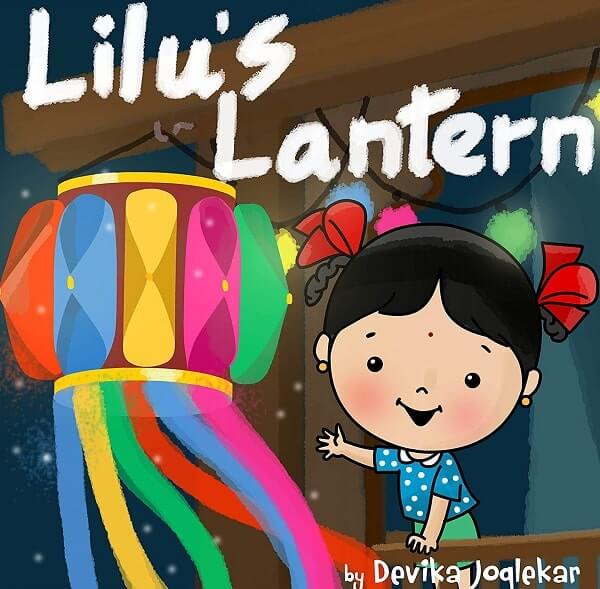A good variety of books based around Diwali have mushroomed in recent years. Sometimes it is a straightforward retelling of the tale of the Ramayana (such as in Prince of Fire and Rama and the Demon King), or of the activities on and before Diwali day (such as in My Diwali Book where we follow a little girl as she prepares for and celebrates Diwali).
At other times, it is a Diwali tale told by a popular children’s character – Peppa Pig for instance. Other instances are when the concept of Diwali is worked into an easily identifiable scenario closer to the life of the young reader.
- In Diwali, the Festival of Lights Shalu is scared of the dark as she walks home from the library

- In Lilu’s Lantern, Lilu goes to buy a lantern but can’t choose which colour – so she makes her own

- In The Diwali Gift, three little monkeys get a mysterious gift

- In Rani Saves Diwali, the palace decorator takes ill, and so it is up to the princess to finish the palace decorations

- In Lights for Gita, Gita is miserable at the icy cold of her new home Canada during Diwali, and at not seeing the festivities around her

- In Deepak’s Diwali, Deepak is miserable because things get lost or broken. These situations provide the perfect backdrop to impart the true meaning or essence of the Festival of Light.

Rhyming words (such as Amma Tell Me About Diwali), large colourful illustrations and simple structure in sentences do their job to attract and retain attention, and aid in making it a pleasurable experience for the young reader as well as the adult narrator.
In many instances, these Diwali stories have served a purpose for the creators of the books themselves. Writer Sana Hoda Sood, India-born but living in Washington USA, produced her book Diwali: A Cultural Adventure for her own son, as did Bhakti Mathur of Hong Kong with her Amma Tell Me series. Books on Diwali written by non-Indian writers reflect the valuing of diversity in modern life, and are sometimes part of a series of world religions or philosophies.
Activity books on Diwali, if you can find them, take the introduction to Diwali a step further, because they are fun as well as educational. There are colouring books, books to fill in your own little Diwali details, rangoli books with patterns, even card games. They encourage various cognitive skills, and not in a school teacher-y fashion. In Lights, Camera, Diwali! for instance, the young protagonist gets a camera for a Diwali present, and then sets about photographing each Diwali activity in detail.
The learning opportunities are many: they inspire creativity as they teach how to make things of significance during Diwali. The importance of recycling can be an added bonus if using scrap material.
If you can’t find Diwali activity books, make your own by downloading from resources online.
Also read: Diwali in children’s literature: An engaging book by James Roy










